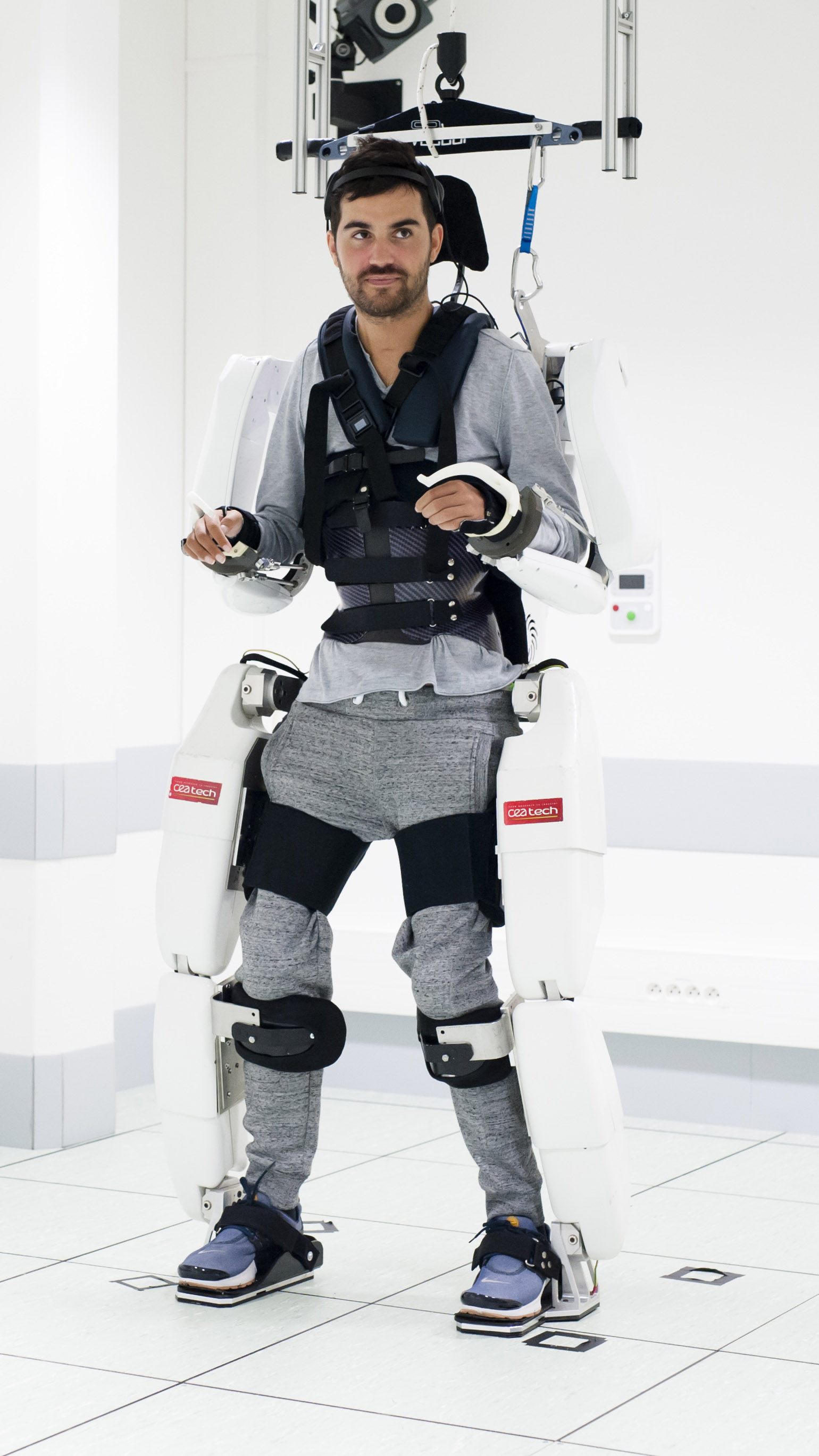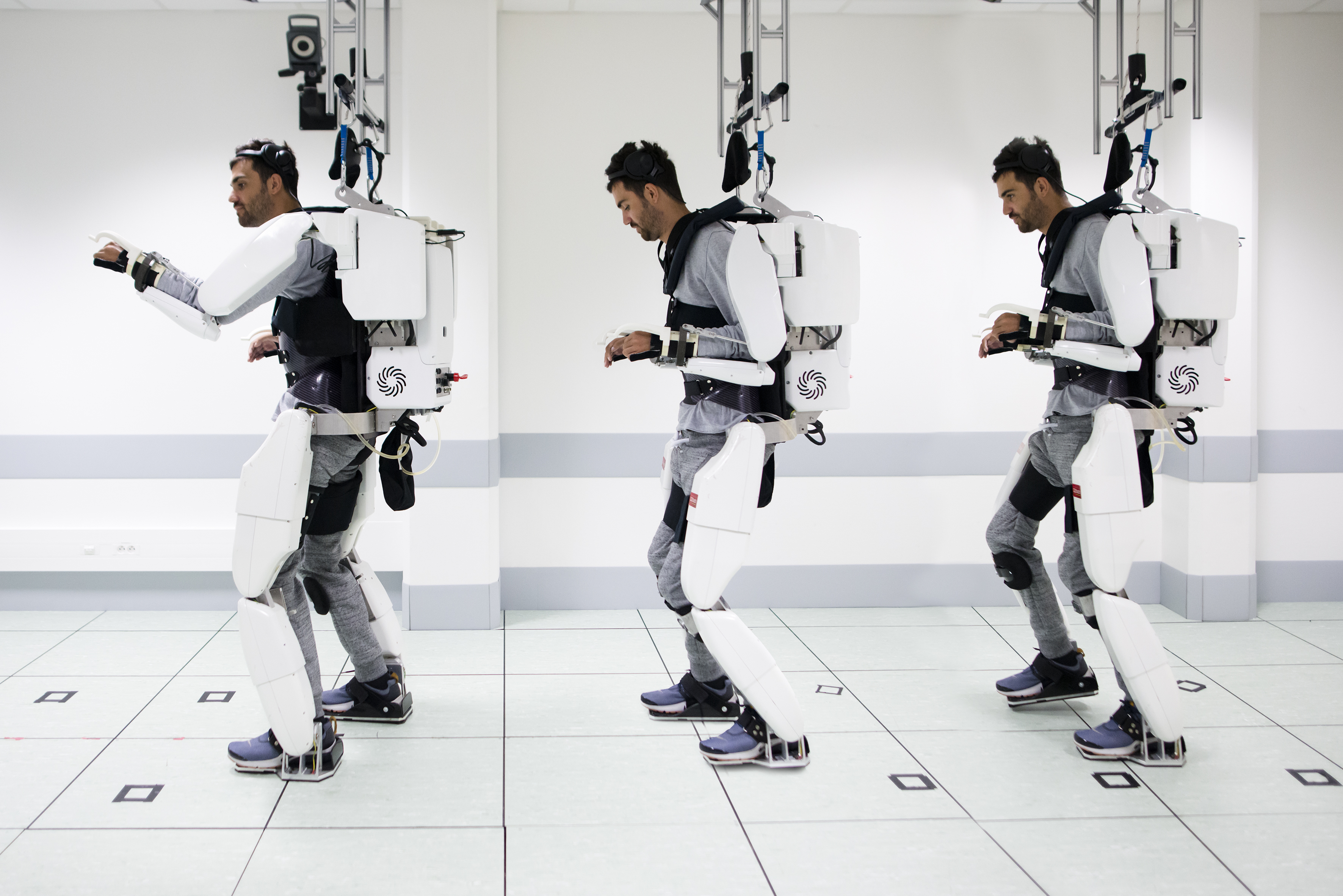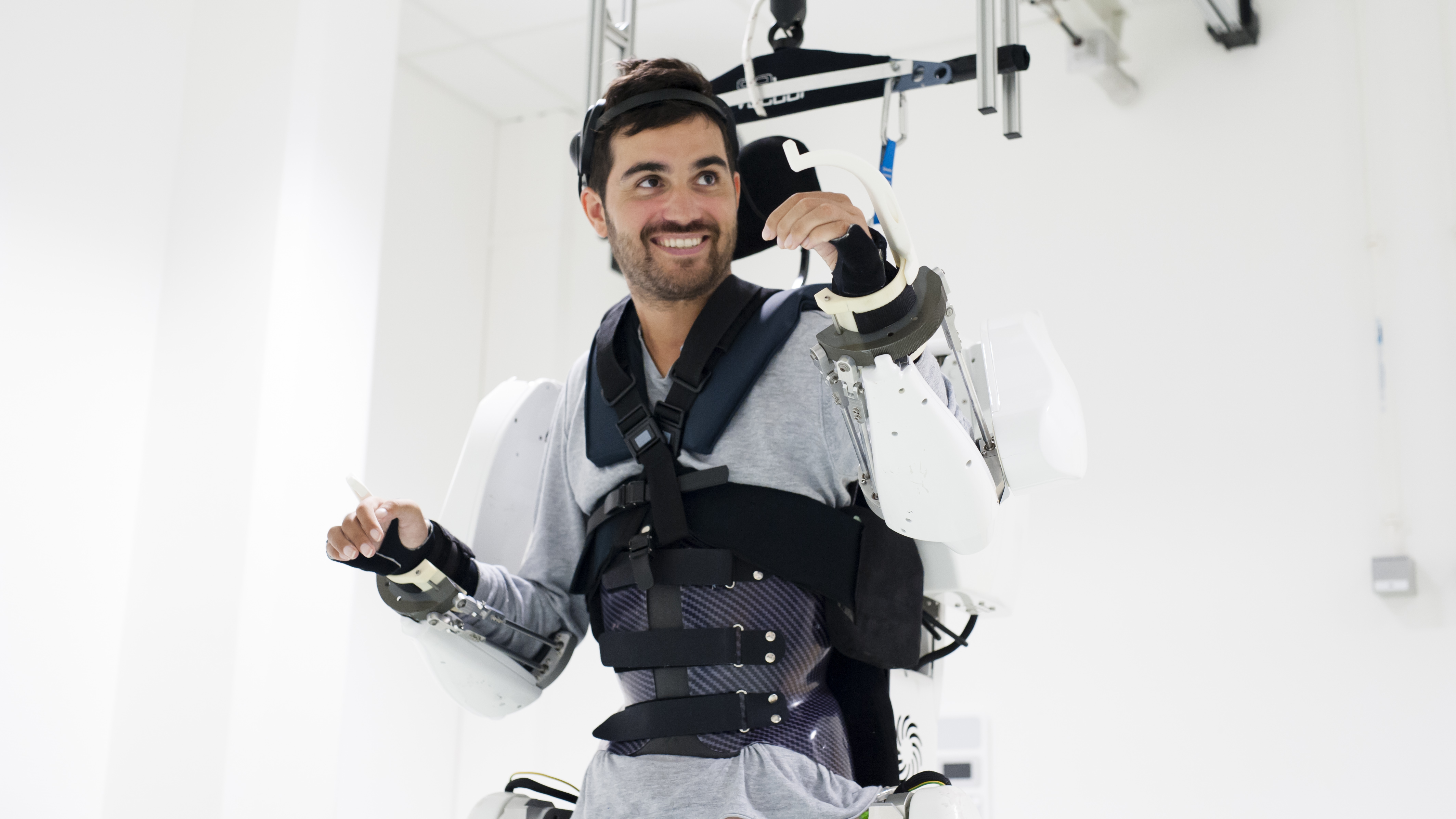00:52

A paralyzed man has once more been able to walk, by using an exoskeleton he controls with his mind. The French quadriplegic operated the bionic suit via implanted brain sensors.
The groundbreaking work used a novel method of mind-reading. Most research so far has involved inserting very thin electrodes into the deep brain, but this risks infection and the electrodes quickly fail as the brain tissue 'scars' over. Instead, in a trial with Clinatec and the University of Grenoble Alpes, scientists rested electrodes on top of the brain's resilient outer membrane.

The electrodes rest on top of the brain (Credit: Fonds de dotation Clinatec)
The electrodes rest on top of the brain (Credit: Fonds de dotation Clinatec)
The patient, a former optician identified only as Thibault, severed his spinal cord in an accident four years ago. Researchers cut out two 5cm circles of his skull, attached the electrodes and asked him to think about moving a computer avatar. After some practice, he was strapped into the suit and learned to make it walk forwards by thinking about moving his arms and legs.

The 65kg exoskeleton 'reads' the wearer's mind (Credit: Juliette Treillet/Fonds de dotation Clinatec)
The 65kg exoskeleton 'reads' the wearer's mind (Credit: Juliette Treillet/Fonds de dotation Clinatec)
The system isn't perfect: the 65kg suit is suspended from the laboratory ceiling, to stop Thibault falling over. But it is a significant scientific advance - previous exoskeletons have only moved one limb at once - and understandably Thibault is overjoyed.
"I felt like the first man on the moon," he said. "I hadn't walked for two years. I forgot what it is to stand, I forgot I was taller than a lot of people in the room."

Four years after breaking his neck, Thibault was able to walk again (Credit: Juliette Treillet/Fonds de dotation Clinatec)
Four years after breaking his neck, Thibault was able to walk again (Credit: Juliette Treillet/Fonds de dotation Clinatec)